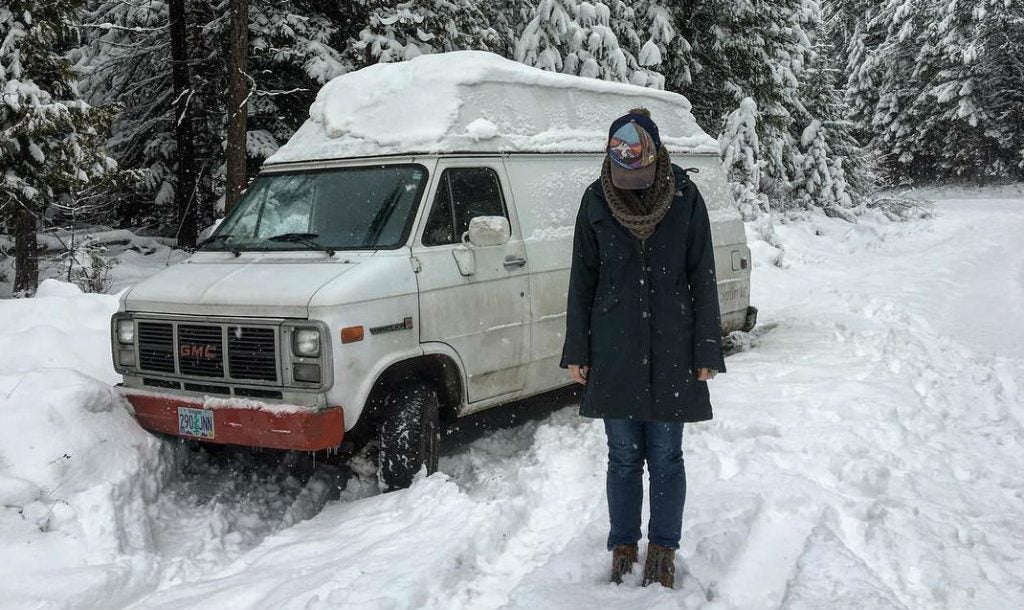This article was brought to you by Gregory whose backpacking packs are the perfect companion to your summer thru hike!
Preparing for a thru-hike begins many months before your boots land at the start of your chosen trail. If you plan to tackle a big trail, like the Appalachian Trail or the Pacific Crest Trail, you’ll need at least several months to get your body, mind, and gear in shape.
Our resident big trail experts, Shelly B. and Jenny R., are here to help you get started on your thru-hiking preparation. Last summer, Shelly B. spent 16 days on the Appalachian Trail in New York, and Jenny R. completed the Oregon portion of the Pacific Crest Trail.
Start Preparing for Your Thru-Hike With These 9 Tips
They’ve made the mistakes, discovered the challenges, and enjoyed the thrills of hiking on two of America’s most iconic trails. Now they’re here to help you get ready to do the same.
1. Hike with a full pack.
“Even if it means wearing your backpack while you walk around your neighborhood, get your body used to carrying something. This also helps you figure out how much weight you’re willing to carry. In the beginning you can just fill it with whatever weight you think you will carry. As your training progresses, start to fill your pack with what you will actually take with you. This also allows you to become one with your pack and figure out the best way to use the unique features.” — Jenny R.
2. Tackle some big inclines.
“Just walking doesn’t truly prepare a person for the mountains. Climbing those big boys requires the use of major thigh muscles that are only tested when going vertical! I have found steps to be the best training for me. Climbing mountains takes a lot out of my legs, and working those major thigh muscles that are required when going uphill really helps!” — Shelly B.
“Get used to hiking with trekking poles if you plan on using them (which I highly recommend). Trekking poles are your friends on hills.” — Jenny R.
3. Read up on thru-hiking.
“READ! Everything you can get your hands on! I went to the library and checked out all the AT books. Our library also has an inter-library loan program, which borrows from many libraries in the state, so I could order books from other branches. There are also books online and through Kindle.” — Shelly B.
4. Replace gear with lighter options.
“I look at my gear every winter, think about what I really need, what I don’t need, and how much it all weighs. I always make at least one new purchase of a quality piece of gear that will lower my carry weight.” — Shelly B.
“Weigh everything and see what you can swap out for something lighter if possible.” — Jenny R.
5. Focus on your big three.
“Think BIG THREE: tent, sleeping bag plus matt, and backpack. Keep weight in mind! A good backpack will make the difference in how you feel all day – everyday! My Gregory Pack was a good mid-weight pack, with ample carry space, and outstanding fit. My Gregory Maven 55L is perfect for a weekend, a two-week section hike, or a thru hike!” — Shelly B.
6. Practice packing and unpacking.
“Frequently pack and unpack your backpack before and after every hike or walk. This helps you become robotic in your movements, and it will help you find your sweet spot with pack weight distribution. Packing and unpacking can also give you a better idea of what gear you might want to get rid of.” — Jenny R.
7. Pick your dates.
“I would want to hike the southern areas of the AT in the earlier or later part of the hiking season (prior to July or after August) to minimize my exposure to extreme temperatures. Some people also want to avoid the “bubble” — the time when the most thru-hikers are moving along. Google “AT bubble” to determine those dates if that is something you want to avoid, or aim for.” — Shelly B.
8. Consult a physical therapist.
“One of the best things my husband and I did was involve a PT in our pre-trip training. He was able to evaluate my walk and get me to use muscles I wasn’t using before (i.e. my glutes). He also helped me utilizing smaller, more stabilizing core muscles rather then over exerting the larger core muscles. This helped with muscle fatigue and sharing the load equally so I could keep going longer.” — Jenny R.
9. Start to think about travel plans.
“I have driven up to 17 hours and also flown. Personally, I like to drive to my end point, park my car, and have a prearranged shuttle driver pick me up and bring me to my starting point.” — Shelly B.
This article was brought to you by Gregory.

Right: Image from The Dyrt campter Matt S.
Check out Gregory’s line of backpacking packs to prep for your next thru-hike.
The Dyrt is the only camping app with all of the public and private campgrounds, RV parks, and free camping locations in the United States. Download now for iOS and Android.Popular Articles:
Articles on The Dyrt Magazine may contain links to affiliate websites. The Dyrt receives an affiliate commission for any purchases made by using such links at no additional cost to you the consumer.



